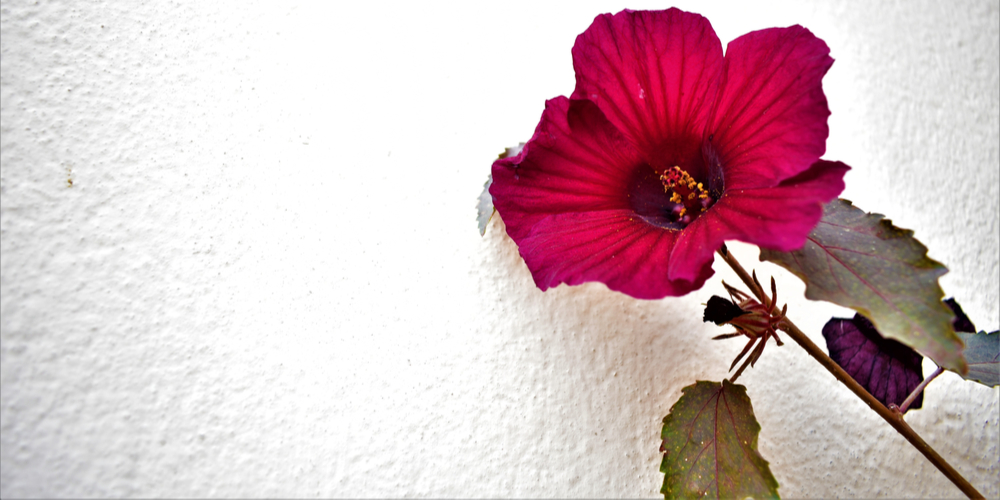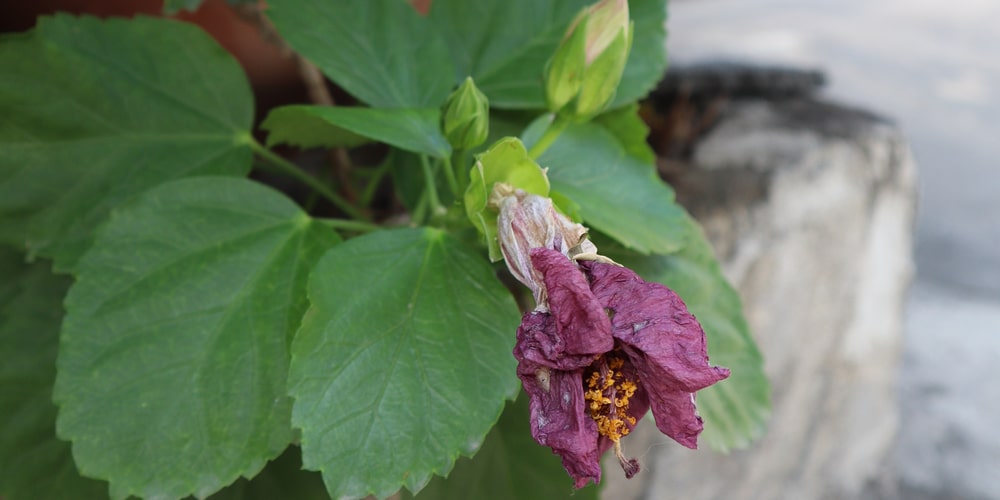If you want to add a touch of a tropical vibe to your garden, planting hibiscus might be ideal. These gorgeous flowering plants thrive in full sun, prefer moist soil, and need warm temperatures.
Usually, if you do everything right, you shouldn’t have problems with them. However, hibiscus will struggle to survive in dry conditions, especially when the humidity is low or there are strong winds in your area.
If your plant starts looking sad, drooping, or displays some discoloration, you should take some measures to revert it to its natural conditions. But we have good news for you!
Usually, when you identify the cause (and take adequate measures), you won’t have any problems with it! If you want to learn how to bring a hibiscus back to life, keep reading: you’ll find all you need to know in this essential guide we put together for you!
What Can You Do When Your Hibiscus Turns Yellow?
Hibiscus isn’t particularly challenging to grow. However, they tend to suffer when stressed. And due to their sensitivity to environmental change, they might turn yellow at the slightest change in the climate.
Luckily, most of the time, discoloration is a temporary reaction that will affect your hibiscus as long as it doesn’t adjust well to the new environmental conditions.
Common reasons for hibiscus turning yellow include a windy and dry environment, low humidity levels, dry soil, and cold weather. While you may not do much about cold weather, you can protect your plants from temperatures below 60°F.
Also, increase humidity and moisture around your plant to prevent wilting and yellowing in your hibiscus’ leaves. Avoid overwatering your plant: soggy soil might also cause issues.
Don’t forget to use the proper potting mix. It should be well-draining and nutritious. If necessary, consider adding organic mulch around your plants: it will improve drainage, increase water retention, and provide your hibiscus with all the nutrition they need to thrive.
Why Are You Hibiscus Flowers Dying?
If you notice your hibiscus blooms lasting for only a couple of days, don’t worry: there is nothing wrong with your plant! Indeed, these tropical plants’ flowers will only last one full day.
You can deadhead blooms to encourage flowering, but you should expect flowers not to live for long. Removing spent flowers will make your plant healthy and reduce attacks from pests and diseases. Additionally, it will contribute to increasing the aesthetic appeal of your plant.
Remember to remove the base of the flower to reduce the chances of seed pods developing. If you leave them there, they’ll take energy away from your plant, which might even cause premature death.
If you don’t grow your hibiscus in adequate conditions, you might notice your flowers dying before they open. That is usually due to inadequate moisture: too much or too little water can cause unopened buds to fall.
On the other hand, if your hibiscus doesn’t produce flowers, you might have planted it under inadequate lighting. Don’t forget that hibiscus is a tropical plant that needs plenty of direct sunlight to thrive (and produce abundant and healthy blooms). Remember to fertilize your plants too! Hibiscus tend to be heavy feeders.
Can You Bring Your Hibiscus Back to Life?
As we mentioned before, if your hibiscus show signs of discoloration or drooping, you might revert it to its natural state by changing its environment. To bring it back to life, you’ll first need to identify what’s causing your plant to suffer. And that might not be easy since many factors can stress a hibiscus.
Don’t forget that the local weather (and sudden changes in temperatures) will also have an impact. Give your plant some time to adjust to the new situation before making more changes.
The same applies if you move your plant indoors during the winter: the hibiscus is susceptible to changes and will react to the new environment by displaying discoloration.
How to bring a hibiscus back to life: Final thoughts
Overall, we recommend you take action as soon as possible. Doing so will limit damages to your plant and allow you to enjoy your hibiscus for longer (and with limited issues).
Don’t forget that some pests might also be causing your plant to suffer. Identify them early on to prevent an infestation and take appropriate action to remove them from your plants.
Related Article: What’s Eating My Hibiscus Leaves?


